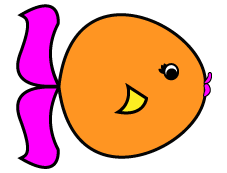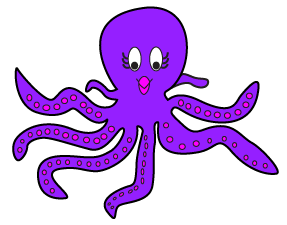

Click on my logo to go to my store!
 |
 Click on my logo to go to my store! |
|---|
| WEBBY WANDA'S FISH SCIENCE FACTS |
|---|
 |
 |
 |
 |
 |
 |
 |
 |
Lessons |
|---|
|
|
|---|
| Home | Blog | Videos | Characters | For Grown Ups | Voice Over Characters | Arts and Crafts | Educational | Webby Wanda's Shop |
|---|
PETS AND FARM ANIMALS FRUITS AND VEGETABLES HOLIDAYS |
WEBBY WANDA'S FISH SCIENCE FACTS |
||||||
WEBBY WANDA'S FISH SCIENCE FACTS Click on here or on the fish to go to webbywanda's " How to draw a cartoon fish" |
|||||||
There are three main family groups of fish. fishes are a vast and varied group of fascinate aquatic creatures, designed for life in the water. Each developed along different evolutionary pathways, as shown by gather body form and internal structure. They are vastly different, but you can make some generalizations,. Most fishes live in water, breathe through their gills, have scales, and swim using their fins. All fishes are vertebrates, which means that they have a backbone, and an internal skeleton rather than an outside "shell" or exoskeleton. There are five main groups of vertebrates: fishes, amphibians, reptiles, birds and mammals. Most people are aware of the variety within the last four groups. Yet there are about as many kinds or species of fish's (about 20,000) as there are in the four groups combined! INSIDE A FISH The typical fish has many of the body organs found in reptiles, birds and even mammals like ourselves. A skeleton provides the internal framework. The brain receives information about the outside world via sense organs such as the eyes and the lateral line (the sides of the fish body) and coordinates the complex movements of swimming, which are carried out by teams of muscles. Instead of the lungs of air-breathing animals, fishes have gills which do the same job- absorbing oxygen. The fish's heart pumps blood through a network of vessels, and its digestive system processes food into nutrients for growth and repair. Various glands make digestive juices and other body chemicals (hormones) that control development. There are also sexual organs for breeding. The scientific study of fish is called ichthyology. |
HOW FISH BREATHE FISH SCALES Most fishes are covered with a layer of thin, transparent plates called scales, which overlap like shingles on a roof. There are four main types of scale; cycloid and ctenoid, which are found a true bony fish; and placoid, found on some cartilaginous fish. Ctenoid scales have tiny teeth along the edge; fishes with these scales, such as bass and perch, feel rough to the touch. Cycloid scales have a smooth service and are found on carp and salmon. Gar have ganoid scales, which are shiny hard, and diamond shaped. Sharks and most rays have placoid scales, which look like tiny teeth or thorns. A RIOT OF COLOR Fishes have evolved into almost every imaginable color and pattern. This is very useful for the fish in a variety of ways. Color can camouflage a fish from both the predator and prey; smooth silvery greens, blues and browns camouflage some species in open water a riot of brilliant reds, yellows and blues conceals others among the equally splendid colors of the coral reef. Spots, stripes, and patches "disrupt" or break up a fish's outline, confusing predators. Color and pattern also help a fish chase away intruders from its territory. When breeding, some fishes' colors become brighter, which attracts potential mates. Reference: DK Eyewitness Books Fish |
Thank you for visiting my Arts and Crafts web site!
I would be very grateful if you would please give the gift of creativity, and shop for your gifts at the stores on my site. |
|||||
Many kinds of fish's swim together in large groups called schools, or in looser connections called aggregates. Often, schooling is associated with feeding behavior - fishes such as herring, follow each other in search of plankton-filled waters. Some species collect in great numbers in the breeding season. Protection from predators through "safety in numbers" is another way fishes benefit from swimming in schools, especially young fishes and smaller species. As a predator approaches a school, it is overcome by the bewildering numbers and activity ,and is unable to pick out one individual prey. Small fishes in a dense school, moving in total unison, may discourage a predator by appearing as a single, much bigger creature. |
|||||||
 Join us for more "How To Lessons for Arts and Crafts", with drawing and painting fun for kids and adults on webbywanda.tv |
 GREAT JOB reading about fish science facts! Now why not practice drawing an OCTOPUS? |
||||||
| Home | About Us | Contact Us | Videos | Affiliates | Advertise with us and Sponsors | Link to Us |
|---|
| Water Color with Wanda Copyright 2010 All Rights Reserved, ™ A production of Twin Dolphin Studios
|
|---|
| How to draw a cartoon fish with www.webbywanda.com, webbywanda.tv- All Copyrights Reserved 2012 © |
Sing, record and share your favorite songs online |